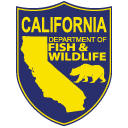 The Bocaccio is a member of the rockfish family, and found statewide to depths of around 1,050 ft. Juveniles can be found schooling around kelp beds or central California piers. When mature, they seek deeper water and begin to school near the bottom rather than near the surface. As adults, they are commonly found in waters from 250 to 750 ft. deep over somewhat irregular, hard, or rocky bottoms.
The Bocaccio is a member of the rockfish family, and found statewide to depths of around 1,050 ft. Juveniles can be found schooling around kelp beds or central California piers. When mature, they seek deeper water and begin to school near the bottom rather than near the surface. As adults, they are commonly found in waters from 250 to 750 ft. deep over somewhat irregular, hard, or rocky bottoms.
Distinguishing Characteristics
- Brownish to dusky reddish extending down over the belly
- Young fish are light bronze with speckling over the sides and back; becomes darker and loses speckling with age
- Body elongate, head pointed
- Mouth large, lower jaw greatly protruding
- Mouth extends to behind the eye
Life History & Other Notes
Bocaccio feed mainly on fishes such as surfperch, jack mackerel, anchovies, and sardines. Squid, octopus, and crab are also eaten.
Females mature at 17 in. long. As with all rockfish, fertilization is internal and development of the embryos takes place within the ovaries until the young are ready to hatch. A 28-inch female may produce 1.5 million young. Most young are born from December through April. Newly hatched young do not completely absorb the yolk from the egg stage for a period of 8 to 12 days.
Almost any rock or rubble bottom at depths from 250 to 750 ft. will yield Bocaccio. Use baited hooks rigged above a sinker heavy enough to take the bait to the bottom on a fairly straight course. Because of the depths involved, a tough bait like squid should be used.
Bocaccio Quick Facts:
Scientific Name: Sebastes paucispinis
Other Common Names: salmon grouper, red snapper
Range & Habitat: Statewide over rocky or hard bottom
Length & Weight: To 3 ft. and 21 lb.
Life Span: To 35+ years
Diet & Suggested Bait/Lures: Feeds on a wide variety of fishes as well as squid, octopus, and crab. Use squid for bait. Lures and jigs work well also.
Excerpt from the California Finfish and Shellfish Identification Book.
Single copies of the book are available to California residents free of charge by emailing a request to publications@wildlife.ca.gov.

